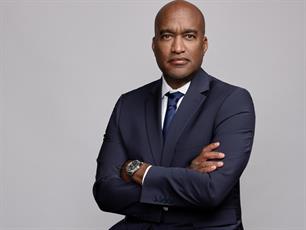Arun Sudhaman 07 Jun 2013 // 9:08PM GMT
Every year, delegates at the annual AMEC Summit on PR measurement vote on the key priorities that they feel the organisation must focus on in the year ahead.
This year’s event, which concluded today in Madrid, saw the following four priorities receive the most votes.
1. Develop a global education program
2. Provide guidelines that convey measurement concepts
3. Translate measurement and analytics into tools (predictive, growth, insights)
4. Adopt standards by the Coalition for Public Relations Research Standards
It is a worthy exercise and, like much of AMEC’s work, deserves support for pushing forward attempts to reach consensus regarding that most elusive of quarries: credible PR measurement standards.
However, I cannot help but feel that this year’s priorities do not differ dramatically from last year’s Summit in Dublin or, indeed, the year before that in Lisbon. Which suggests that the conversation about measurement of PR risks becoming a circular process, particularly in the eyes of the many industry people who already view the entire debate with more than a hint of disdain. To them, measurement is an issue that has bedevilled the industry for more than two decades; the lack of progress, they might argue, demonstrates that energies are better expended elsewhere.
The PR industry has enough trouble, as it is, justifying its value within organizations. A couple of speakers at the event - notably Booz Allen VP Chris Foster and Philips comms head Andre Manning - eloquently outlined the risks entailed by the PR industry’s continued inaction.
For Manning, the risk is that a company like IBM, with its keen appetite for data and analytics, will develop common standards first. “If it will take us another 10 years, others will do it for us,” said Manning. “Are we brave enough as an industry to go for one standard?”
These days, the ‘silver bullet’ approach to measurement is rarely viewed as a realistic one. At the very least, though, it seems clear that the industry would benefit from some level of shared measurement standards. So AMEC’s work in this regard should be supported, particularly if - as Ketchum’s Rob Flaherty has pledged - major agencies and clients are to sign up.
The discourse over the precise nature of those standards will continue. The Holmes Report has long advocated an approach based on net promoter score, as currently utilized by Philips, to name just one company. Two industry coalitions have developed a range of metrics that cover earned and social media. The hope is that this move does not simply shift the argument from whether we should adopt standards, to which standards we should adopt.
In their book Big Data, Viktor Mayer-Schonberger and Kenneth Cukier argue that the ability to crunch an "incomprehensible" amount of digital information is redefining how companies make decisions, by providing insights that are more correlative than causal. For a marketing industry that likes to understand why things happened, this is likely to prove a pivotal change - away from elegant, accessible hypotheses towards insights that are simply based on data patterns.
Against this backdrop, it is unsurprising that more than one client at the AMEC Summit issued plaintive pleas for the PR industry to help them: with understanding sophisticated metrics, with making the case to their CEOs, and with demonstrating the business value of public relations. Merely adopting shared measurement standards will not be enough. Unless they are applied with sufficient rigour, then this latest effort may prove nothing more than another false dawn in the PR industry’s attempts to fashion a brighter, more measurable future.


































.jpg)





.tmb-135x100.jpg)











